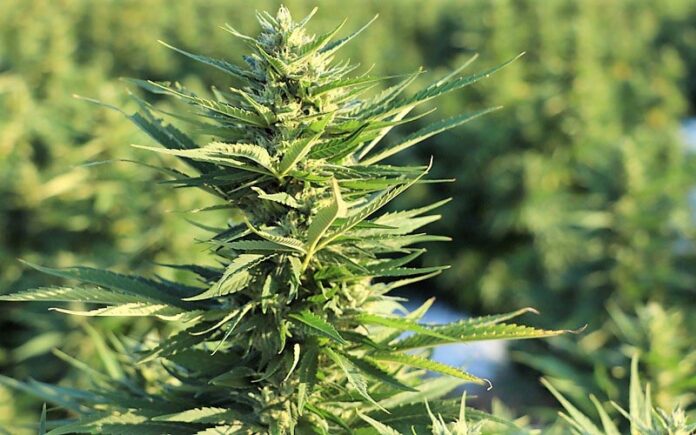To people convinced of its therapeutic properties, cannabidiol (CBD) is nothing short of a miracle drug. Proponents of CBD — which is extracted from the flower of the cannabis plant — variously claim it is a safe and effective treatment for chronic pain, diabetes, anxiety, multiple sclerosis, hypertension, Parkinson’s Disease, arthritis, schizophrenia, acne and cancer.
However, few of these claims have been subjected to rigorous clinical testing. Most rely upon small studies, anecdotal evidence and personal testimony. To date the U.S. Food and Drug Administration (FDA) has only approved CBD for one prescription medication, Epidiolex, which is used to treat rare forms of epilepsy and a genetic disease that causes non-cancerous tumors to grow in the brain. The administration also warns that CBD may cause liver damage and has been linked to reduced male fertility.
“The FDA is concerned that people may mistakenly believe that using CBD ‘can’t hurt,'” the administration warned in an informational news release. “We have seen only limited data about CBD’s safety and these data point to real risks that need to be considered. Consumer use of any CBD products should always be discussed with a healthcare provider.”
While the curative value of CBD remains unclear, one thing can be said with certainty: During the initial rush to capitalize on booming CBD markets, out-of-state CBD processors came to Montana with big promises about the big money to be made growing hemp.
The sales pitch came as Montana agriculture was just emerging from some of the lowest wheat and barley prices in a generation, and grain growers were eager to explore alternative crops to bolster their bottom lines.
“In 2019 commodity prices were very, very difficult for farmers,” recalled Montana Hemp Program Coordinator Andy Gray. “You had wheat at $4 a bushel, corn was very low, so you had all these farmers looking for an alternative to the crops we’ve been growing here for generations. They listened to some folks who were basically trying to sell them snake oil, saying you can make $20,000 an acre with this hemp. It was just kind of like this perfect storm in 2019 where guys heard about other farmers who had made out really well growing hemp, and a bunch of people who weren’t from the farming industry come in, and things didn’t go very well.”
Hemp production in Montana was introduced as a pilot program in 2017. In that year 22 growers were licensed to plant about 5,000 acres across the state. After the 2018 Farm Bill broadened legalization of hemp the crop took off. According to Montana Department of Agriculture statistics, 277 growers were permitted to grow hemp in 2019, with total plantings across the state covering about 51,000 acres.
However, the promises of big rewards for Montana hemp harvests never materialized.
“These guys came in saying this is how you have to farm hemp,” recalled Andrew Bishop, co-founder of Ag Processing Solutions, an agriculture engineering and consulting firm headquartered in Vaughn, “but they didn’t have any real world experience farming in Montana. They might have come from Kentucky and said, ‘this is how we farm it in Kentucky, so just do it the same way.'”
“They had their farmers all grow CBD varieties of hemp,” Bishop continued. “That failed absolutely miserably in Montana … and then they just disappeared and never paid them. It was truly awful what they did to farmers.”
Last June, a Wolf Point jury awarded the second largest civil judgement in Montana history to 25 eastern Montana farmers defrauded by CBD processors Vitality Natural Health and Eureka 93. The jury found the two Canadian companies guilty of deceptive and fraudulent practices, and ordered them to pay $65 million in compensatory and punitive damages after they failed to honor contracts guaranteeing Montana farmers profits of $500 to $700 per acre to plant and harvest CBD producing varieties of hemp.
Both Vitality Natural Health and Eureka 93 have now declared bankruptcy.
“You don’t roll in and try to dupe a bunch of farmers [to grow] what could be a worthwhile commodity for the region without any money,” Bainville farmer Beau Anderson told the Montana Free Press of the historic settlement.
Understandably, Montana farmers quickly grew leery of hemp. From a high of 51,000 acres in 2019, Montana hemp plantings have now shriveled to around 10% of that in 2021 Montana’s once promising hemp industry crashed, and may take years to recover.
That’s the real tragedy of Montana’s initial foray into hemp; that an alternative crop with so much promise was cut off at the stalk due to the actions of a handful of bad actors.
“Farmers don’t want to grow hemp because processors promised them the world then disappeared with the wind,” said Drew Savage, project manager for Ag Processing Solutions. “The problem is that there are still many people interested in utilizing hemp hearts (the interior of hemp seeds) as a food ingredient. They’re interested in utilizing the herd (core fibers of the hemp stalk) for Hempcrete, and as a bioplastic. They’re interested in using it, but they can’t get it in their hands because no one’s actually processing it in the U.S.”
It’s been legal to import hemp fiber, cosmetics and nutritional products into the U.S. since 2004, but with a few limited exceptions the cultivation and production of hemp was a federal offense in the U.S. until passage of the 2013 Farm Bill. That legalistic hurdle has allowed Canadian hemp producers to establish a firm upper grip on North American hemp production, an industry the Hemp Business Journal estimates will reach $2 billion in sales in 2022.














